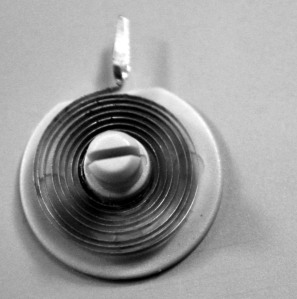I have extracted the bimetallic coil from a mechanical thermostat in hopes of using it to create something responsive to heat that can help in mapping out the thermal bounds of a radiant heat object. This strip of wound metal is extremely sensitive to changes in temperature and begins to respond immediately and precisely. I turned on a lamp within six inches of the coil and here is a picture of before the lamp was turned on, after two seconds and after five seconds. The change happens so fast and the motion it goes through has so much potential, but the coil itself is made of such a thin gauge of metal that it is extremely lightweight and delicate; if I want to attach something to the coil it will have to be incredibly lightweight as well.
-
Recent Posts
Recent Comments
Archives
Categories
Meta







